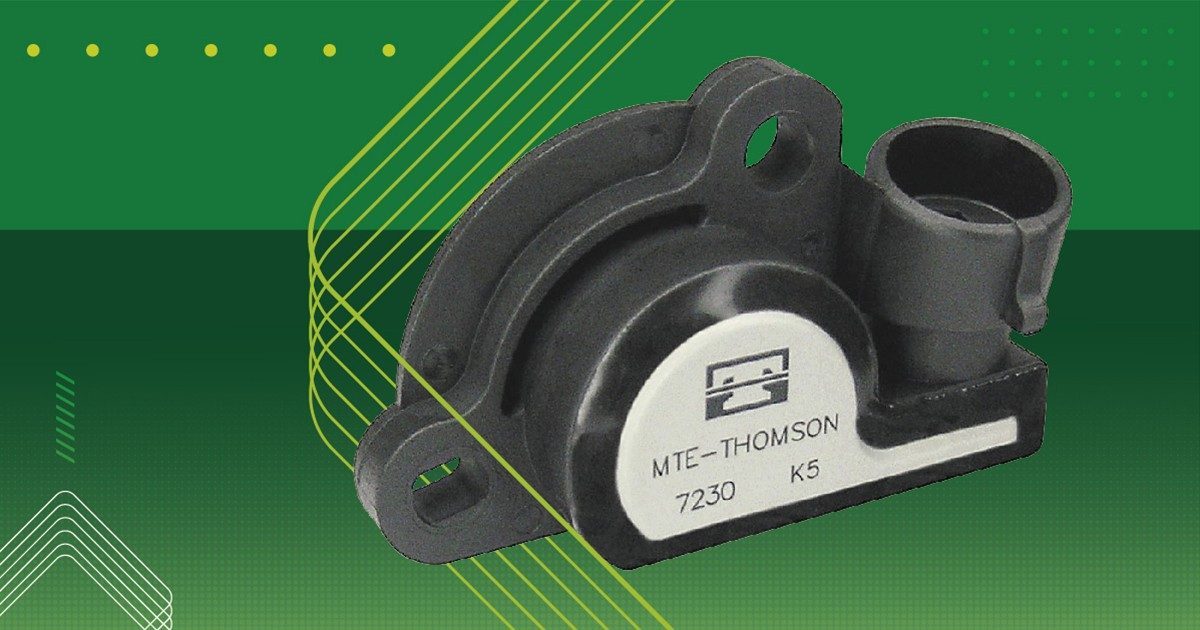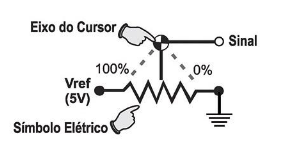Function
The Throttle Position Sensor (TPS) is used to determine the angular position of a mechanical component shaft or the linear position of a valve stem. The angle position is detected by a circular potentiometer and the linear position by a linear potentiometer.
Application
There are some applications found in electronic injection systems:
Throttle Position Sensor – TPS (Circular).
Throttle pedal position sensor.
EGR valve position sensor (linear).
Suspension position sensor. Informs the vehicle’s height relative to the floor.
Door Position Sensor (Electronic A/C Systems): Informs the opening degree of the air inlet and recirculation flaps.
Operation principle
They are basically made up of a potentiometer (linear or circular) which the cursor is integral with a device that moves in a circular or linear manner. The cursor’s electrical terminal represents the sensor signal.
Potentiometer
They are three terminals resistors, two of which are fixed ends, and the third is the central, mobile, called cursor, which can move along the track, between the two ends. (which constitutes the potentiometer track). (1)
As a result, by supplying both ends with a reference voltage, it is possible to measure a variable voltage between the cursor terminal and either end depending on the position of the cursor. (2)
Circular potentiometers: the cursor rotates. They are used to measure the angular movement of the axis to which the potentiometer cursor is attached.
Linear potentiometers: the cursor moves linearly. They serve to measure the linear displacement of the device to which the potentiometer cursor is attached.
Location / Usage
Throttle Position Sensor (TPS): Informs the angular position (opening) of the throttle.
In this application, the potentiometer slider is integral with the throttle axis. It is located on the throttle body.
For safety reasons, in drive-by-wire systems, the sensor consists of 2 potentiometers in the same package, which gives the circuit redundancy.
Throttle Pedal Position Sensor: informs the pedal position on drive-by-wire systems. It is assembled on the top of the pedal and integral with its axis.
It has 2 tracks.
EGR Valve Position Sensor: Informs the EGR valve opening. This sensor consists of a linear potentiometer and is located over the EGR valve. The sensor slider is integral with the stem moved by the valve diaphragm.
Suspension Position Sensor: Informs the vehicle’s height relative to the floor. Usually fixed to the chassis; The cursor is moved by an articulated arm attached to the suspension.
When It Doesn’t Work
When the defect results in a fault condition “out of range” of the sensor (short circuit or open circuit), a fault code is written to memory which can be recovered using test equipment (scanner). In this case, the corresponding system enters a state of emergency.
When the defect results in a fault condition “within operating range” of the sensor, there is usually no fault code recording. The corresponding system may malfunction:
TPS: Engine has errant behavior or oscillating idle
EGR: The engine has an irregular idle due to incorrect mixing or lack of power due to excessive exhaust gas recirculation.
For the throttle pedal position sensor, because it is a dual sensor, the ECU detects most faulty conditions.
Diagnosis / Verification
For the diagnosis a scanner tool could be used, checking the parameter “Throttle Position”, “Sensor TPS”, or similar. Usually, the displayed value could be the butterfly valve opening, in degrees, or the signal voltage.
As it is a variable resistor, it can be verified with:
Ohmmeter, when disconnected from the circuit.
Voltmeter, when connected to a circuit with the ignition on.
In both cases, the diagnose consists of moving the cursor and not observing any sudden changes in resistance or voltage.
Warranty
All MTE-THOMSON products are guaranteed for 01(one) year against defects from faulty materials or fabrication. The guarantee is limited to the replacement of the faulty part; we cannot extend the guarantee to cover defects caused by misuse, neglect, accident or wear and tear. We cannot accept liability for consequential loss or damage which is claimed to have resulted from the use of one of our products. More information: www.mte-thomson.com.br






